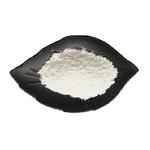The brief introduction of N-isopropylbenzylamine
Jun 3,2024
N-isopropylbenzylamine is originally used as a precursor or intermediate in the chemical industry. Moreover, N-isopropylbenzylamine is an isomer of methamphetamine (METH) and has a similar appearance and physical properties as methamphetamine. Therefore, this chemical was used to mimic methamphetamine in underground markers, and N-isopropylbenzylamine exposure has become a world problem[1].

To identify fake methamphetamine, the Marquis test will not show a colour reaction, while for methamphetamine, it will show a colour change to brownish orange. In Simon's test, both of them show blue. White crystals were dissolved in methanol, and then identification was carried out using GC-MS. The compound N-Isopropylbenzylamine was at m/z 134 with a base peak of m/z = 91. In identification using Raman, only methamphetamine compounds were detected, while for N-Isopropylbenzylamine was not detected. Using FTIR, both compounds were detected equally.
The potency of psychomotor stimulation and the reinforcing effectiveness of N-isopropylbenzylamine (N-ipb) are lower than those of METH. The results showed that N-ipb at a dose of 3 mg·kg−1 significantly induced conditioned place preference in mice, which was comparable to the effect of METH at 1 mg·kg−1. Either acute or repeated N-ipb injections (1 or 3 mg·kg−1) failed to raise the locomotor activity. However, acute treatment with 10 mg·kg−1 N-ipb elevated the locomotor activity compared with saline, while chronic injection of 10 mg·kg−1 N-ipb induced a delayed and attenuated sensitization compared with 1 mg·kg−1 METH. Rats could acquire N-ipb self-administration at a dose of 1 mg·kg−1·infusion−1, and a typical inverted U-shaped dose–response curve was obtained for N-ipb. The mean dose of N-ipb that maintained the maximum response was greater than that of METH, indicating that N-ipb is less potent for reinforcement than METH. In the economic behavioural analysis, a comparison of essential values derived from the demand elasticity revealed that N-ipb is less efficacy as a reinforcer than METH[2]. The present data demonstrate that N-ipb functions as a reinforcer and has potential abuse. However, the potency of psychomotor stimulation and the reinforcing effectiveness of N-ipb are lower than those of METH.
References
[1] Peng Xu. “N-isopropylbenzylamine, a methamphetamine mimics, produces toxicity via increasing nitric oxide in vitro.” Toxicology 480 (2022): Article 153337.
[2] Miaojun Lai. “N-Isopropylbenzylamine-induced conditioned place preference, sensitization behaviour and self-administration in rodents.” Addiction Biology 29 2 (2024).
- Related articles
- Related Qustion
- N-Isopropylbenzylamine synthesis and N-Isopropylbenzylamine uses Jul 29, 2024
N-isopropylbenzylamine, an isomer of methamphetamine, has been used to adulterate methamphetamine.
- N-Isopropylbenzylamine: Application, synthesis and toxicity Apr 28, 2023
N-isopropylbenzylamine, an isomer of methamphetamine, has been used to adulterate methamphetamine, and distributed as fake “Ice” methamphetamine by illicit manufacturers
- N-(1-Methylethyl)-benzenemethanamine - Reaction / Application on synthetic works Nov 27, 2019
Isopropylbenzylamine is a chemical compound used as an intermediate in the pharmaceutical industry as a precursor to the manufacture of some drugs.
4-tolylsulfonylmethyl isocyanide is also known as TosMIC or tosylmethyl isocyanide. TosMIC is a multipurpose synthetic reagent. It is by far the most versatile synthon derived from methyl isocyanide.....
Jun 3,2024Organic reagentsCalcium Phosphate's unique physical and biological properties make it a promising material for bone tissue engineering due to its thermal stability and biological responses.....
Jun 4,2024APIN-Isopropylbenzylamine
102-97-6You may like
- Triphosgene: History and Advantage
Aug 9, 2024
- The different types of Ethanol
Aug 9, 2024
- 1-Nonanol: Chemical property and uses
Aug 6, 2024
N-Isopropylbenzylamine manufacturers
- N-Isopropylbenzylamine
-

- $10.00 / 1ASSAYS
- 2024-08-10
- CAS:102-97-6
- Min. Order: 1ASSAYS
- Purity: 99%
- Supply Ability: 100kg
- N-benzylisopropylamine
-

- $100.00 / 100g
- 2024-08-07
- CAS:102-97-6
- Min. Order: 50g
- Purity: 0.98
- Supply Ability: 20 kg
- N-Isopropylbenzylamine
-

- $100.00 / 1kg
- 2024-08-07
- CAS:102-97-6
- Min. Order: 1kg
- Purity: 99.9%
- Supply Ability: 20tons




